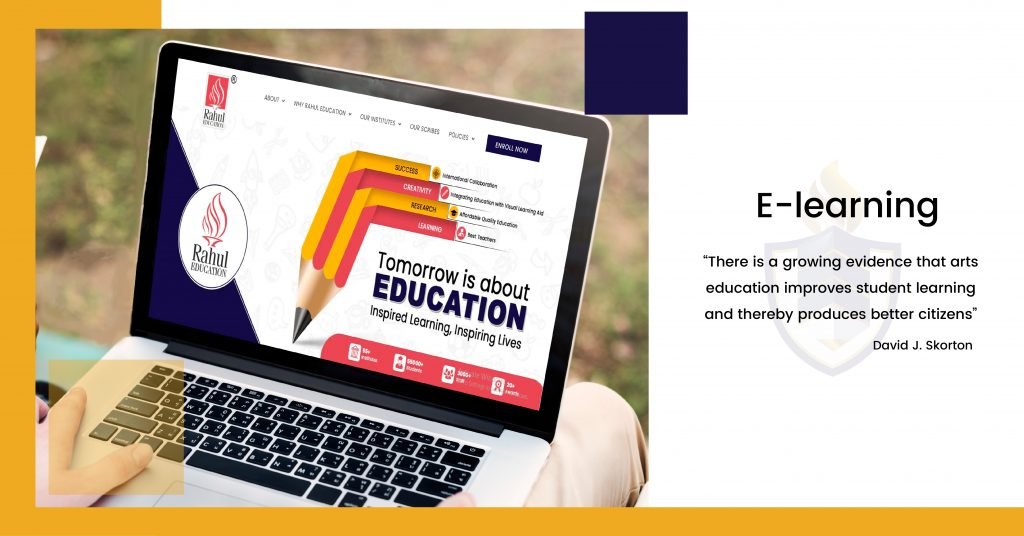Best E-Learning platforms for kids
A learning system based on formalised teaching but with the help of electronic resources is known as E-learning. While teaching can be based in or out of the classrooms, the use of computers and the Internet forms the major component of E-learning. E-learning can also be termed as a network enabled transfer of skills and knowledge, and the delivery of education is made to a large number of recipients at the same or different times. Earlier, it was not accepted wholeheartedly as it was assumed that this system lacked the human element required in learning.
However, with the rapid progress in technology and the advancement in learning systems, it is now embraced by the masses. The introduction of computers was the basis of this revolution and with the passage of time, as we get hooked to smartphones, tablets, etc, these devices now have an importance place in the classrooms for learning. Books are gradually getting replaced by electronic educational materials like optical discs or pen drives.
Knowledge can also be shared via the Internet, which is accessible 24/7, anywhere, anytime. E-learning has proved to be the best means in the corporate sector, especially when training programs are conducted by MNCs for professionals across the globe and employees are able to acquire important skills while sitting in a board room, or by having seminars, which are conducted for employees of the same or the different organizations under one roof. The schools which use E-learning technologies are a step ahead of those which still have the traditional approach towards learning.
Educational institutes across the world have closed due to the COVID-19 pandemic jeopardizing the academic calendars. Most educational institutes have shifted to online learning platforms to keep the academic activities going. However, the questions about the preparedness, designing and effectiveness of e-learning is still not clearly understood, particularly for a developing country like India, where the technical constraints like suitability of devices and bandwidth availability poses a serious challenge.
Majority of the students preferred to use smart phone for online learning. Using content analysis, we found that students prefer recorded classes with quiz at the end of each class to improve the effectiveness of learning. The students opined that flexibility and convenience of online classes makes it attractive option, whereas broadband connectivity issues in rural areas makes it a challenge for students to make use of online learning initiatives.
As the schools and colleges are shut for an indefinite period, both educational institutions and students are experimenting with ways to complete their prescribed syllabi in the stipulated time frame in line with the academic calendar. These measures have certainly caused a degree of inconvenience, but they have also prompted new examples of educational innovation using digital interventions.
This is a silver lining on a dark cloud considering the sluggish pace of reforms in academic institutions, which continues with millennia-old lecture-based approaches in teaching, ingrained institutional biases and obsolete classrooms. Nevertheless, COVID-19 has been a trigger for educational institutions worldwide to pursue creative approaches in a relatively .
No doubt, it is equally important to take forward the concept of non-electronic teaching with the help of books and lectures, but the importance and effectiveness of technology-based learning cannot be taken lightly or ignored completely. It is believed that the human brain can easily remember and relate to what is seen and heard via moving pictures or videos. It has also been found that visuals, apart from holding the attention of the student, are also retained by the brain for longer periods short notice. During this time, most of the universities have shifted to online mode using Microsoft Teams, Zoom, or other online platforms.
Various sectors, including agriculture, medicine, education, services, business, and government setups are adapting to the concept of E-learning which helps in the progress of a nation.

Dr. Mamta Singh
B.A | B.Ed | M.A | Persuing M.Ed
School Principal at Rahul Education, Queen Mary’s High School & Jr. College.
FAQS
Online learning helps students to create and communicate new ideas. You get the chance to uplift your skills and gain knowledge apart from school education. One of the prime importance of e-learning is that it helps students and teachers develop advanced skills.
Advantages of Online Classes
- Online Classes Are Convenient. The first obvious advantage of online classes is the sheer convenience factor.
- Online Classes Are Flexible.
- Online Classes Are More Affordable.
- Online Classes Foster More Interaction.
- Online Classes Unlock More Learning Opportunities.
An online college education might give students access to specialized degree courses that may not be available in an easily accessible or local institution of learning. With an online class, you get to control your learning environment, which ultimately helps you develop a deeper understanding of your degree course.
A learning system based on formalised teaching but with the help of electronic resources is known as E-learning. While teaching can be based in or out of the classrooms, the use of computers and the Internet forms the major component of E-learning.
E-learning is “utilizing electronic technologies to access educational curriculum outside of a traditional classroom,” according to North Carolina’s eLearning education initiative. E-learning courses or programs are generally based online.E-learning in schools isn’t a single-service model.
The top industries using eLearning include Healthcare, Technology, Retail and e-Commerce, Education, and Construction. Today, eLearning means much more than just delivering information.
Types of e-learning
- Lesson-based learning.
- One-on-one learning.
- Group learning.
- Course-based learning.
- Video-based learning.
- Article-based learning.
- Self-paced learning.
- App-based learning.
The tools of E-Learning:
- Automation. The future of e-learning will come in the form of automation and automated course authoring tools. …
- Wearable E-Learning Tools.
- Online Video.
- Gamification.
- Responsive Design.
- A More Secure Cloud.
- Massive Online Open Courses.
- Application Programming Interface.
Rule-based methods, self-determined learning, diffuse differentiation, Gaussian, Bayesian networks, neural networks, item response models.
E-learning is learning by using electronic media and it is only allows learning through the internet. Digital learning means learning using digital age technologies (computer, mobile devices, internet, etc) that can provides a wide range of solutions to enhance knowledge and performance in real life.


